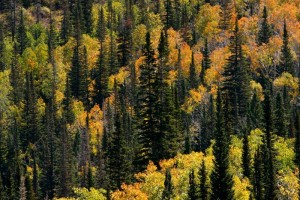I
In May 2011, a postdoctoral student at Los Alamos National Laboratory named Park Williams set out to predict the future of the dominant iconic conifers of the American Southwest — the Douglas fir, the piñon pine and the ponderosa pine. As the planet warms, the Southwest is projected to dry out and heat up unusually fast — few places will be more punishing to trees. Williams couldn’t rely on climate models, whose representations of terrestrial vegetation remain crudely unspecific. He needed a formula that could accurately weigh the variables of heat, aridity and precipitation, and translate atmospheric projections into a unified measure of forest health.
For decades, all over the planet, heat-aggravated droughts had been killing trees: mountain acacia in Zimbabwe, Mediterranean pine in Greece, Atlas cedar in Morocco, eucalyptus and corymbia in Australia, fir in Turkey and South Korea. A year earlier, a group of ecologists had published the first global overview of forest health. They described […]











